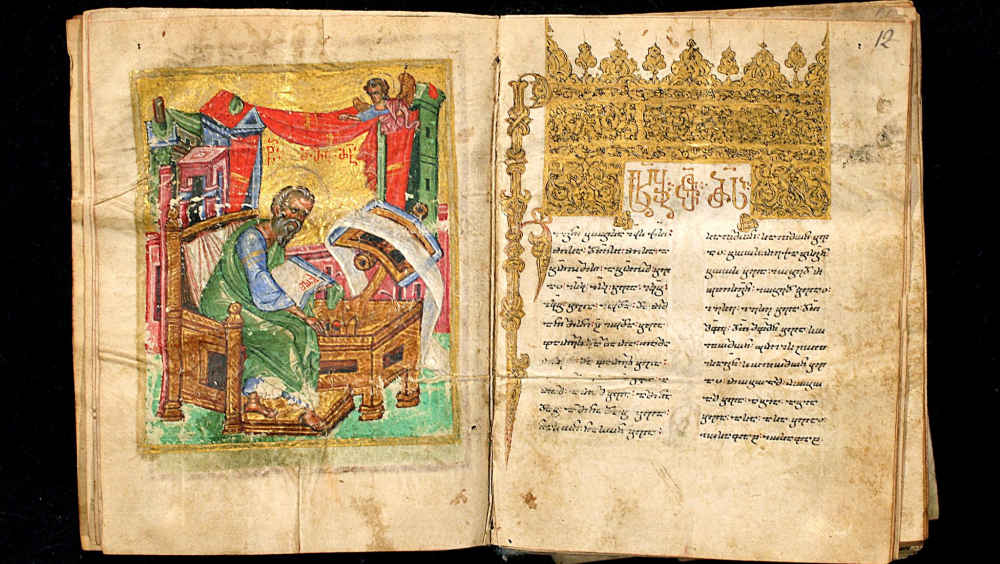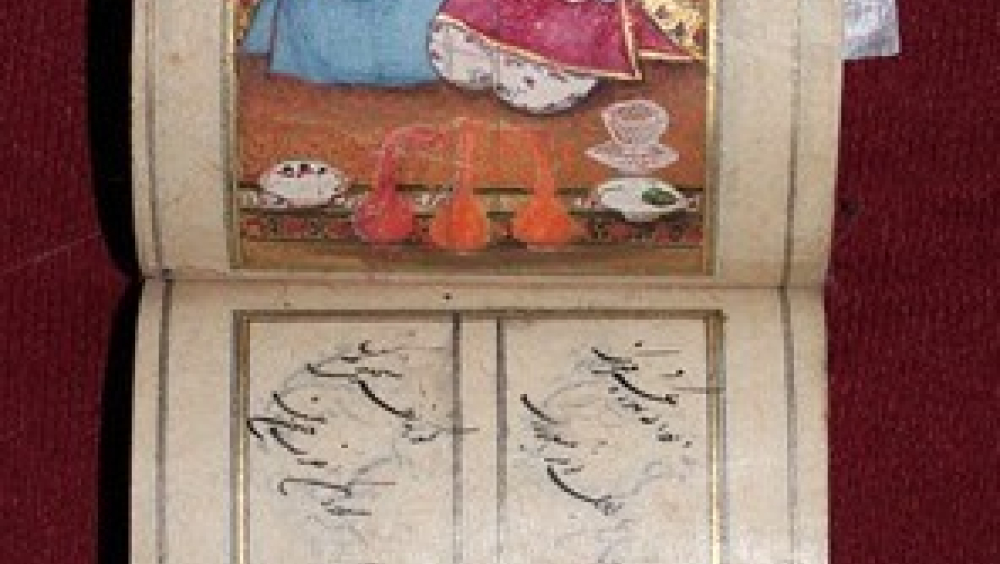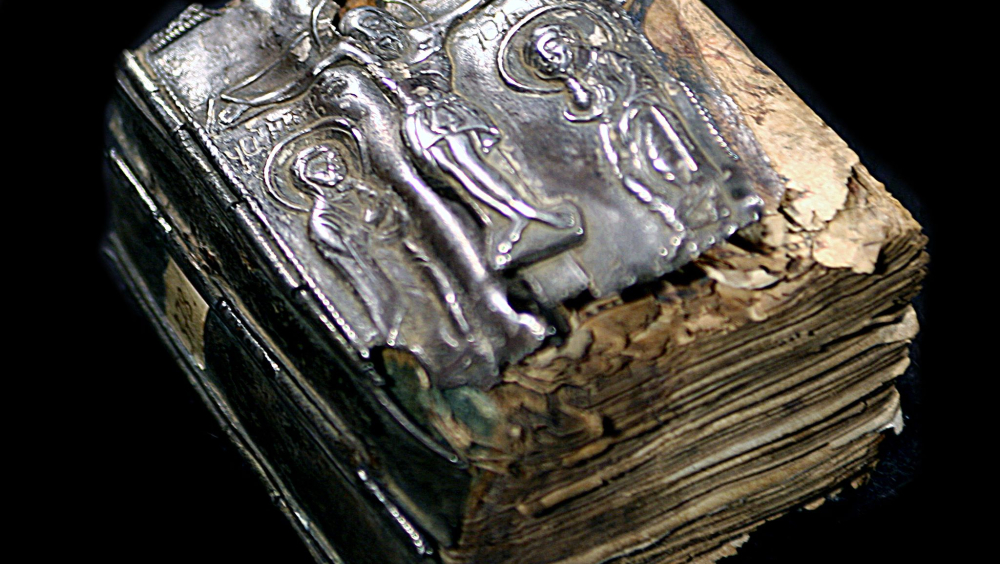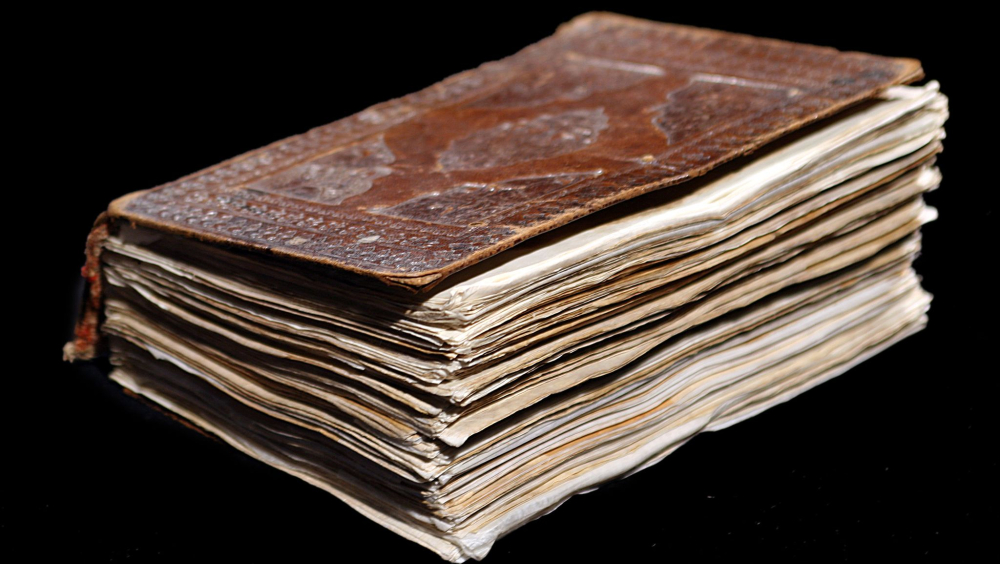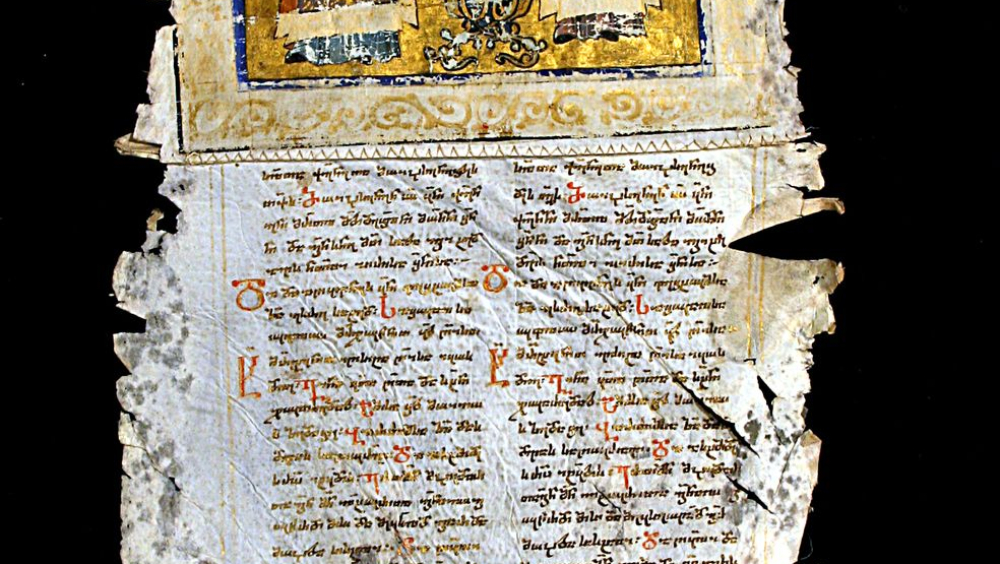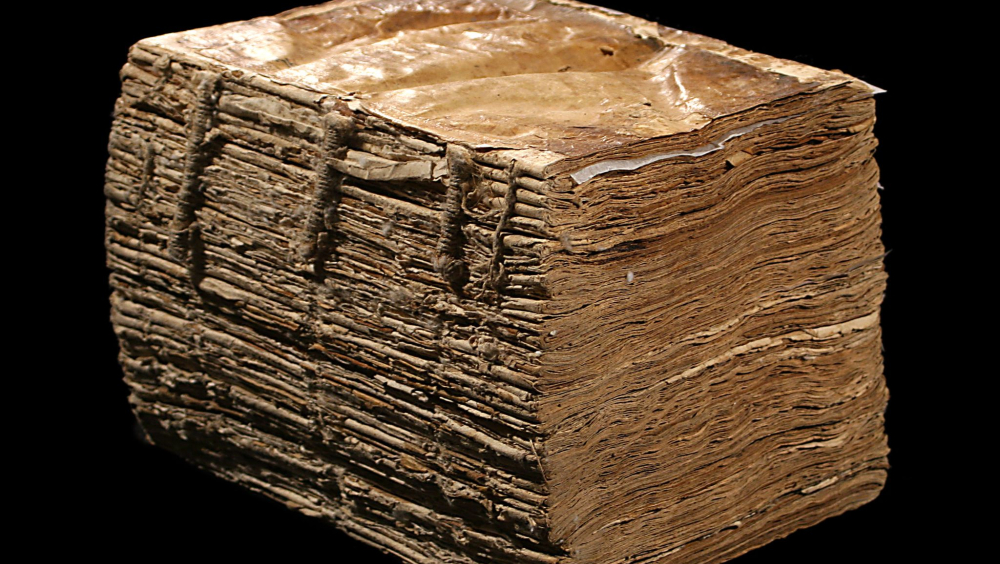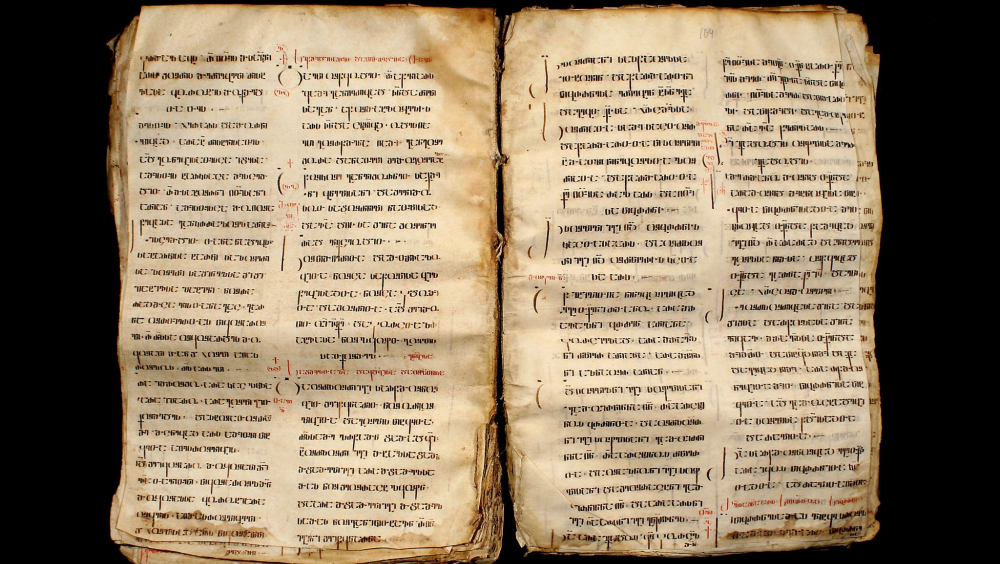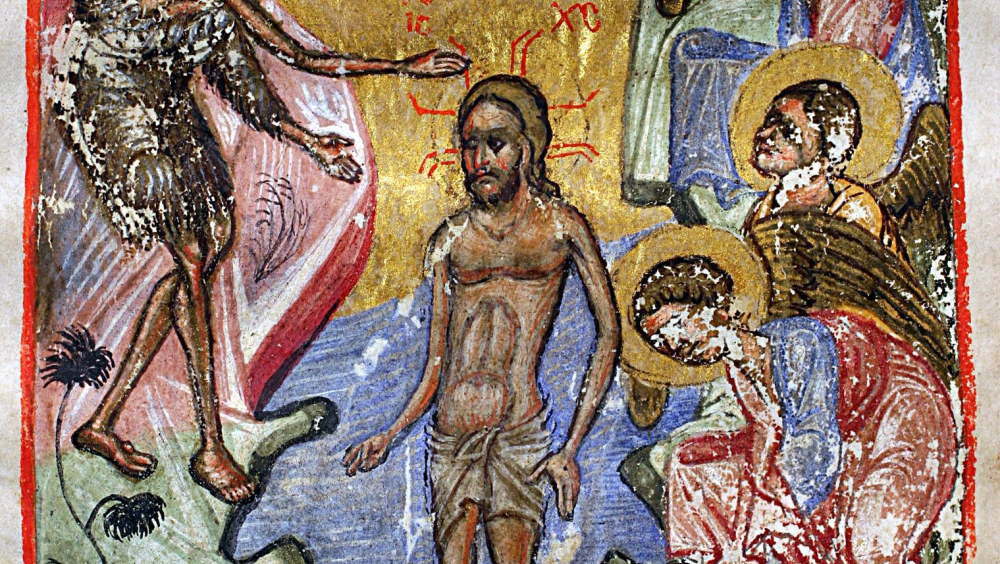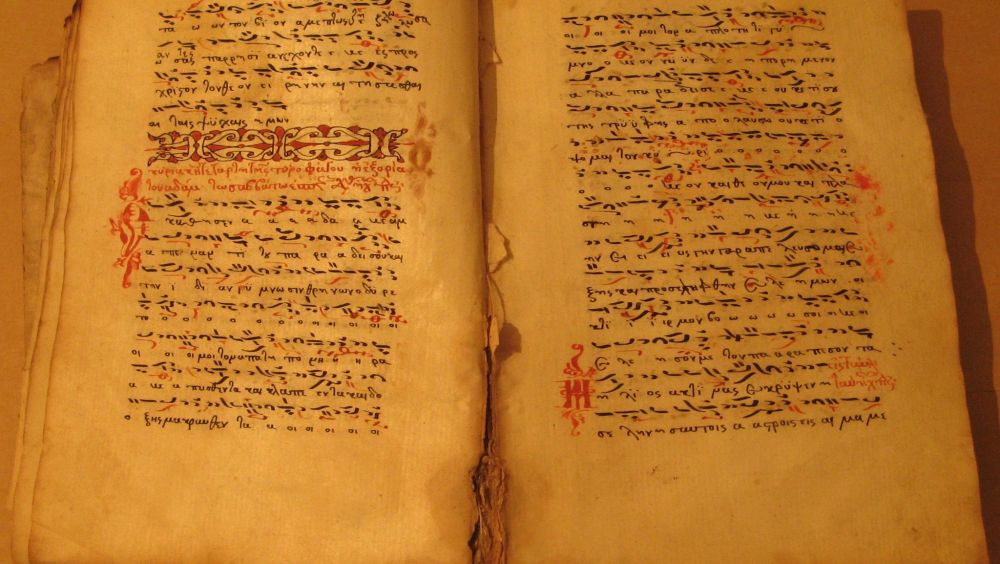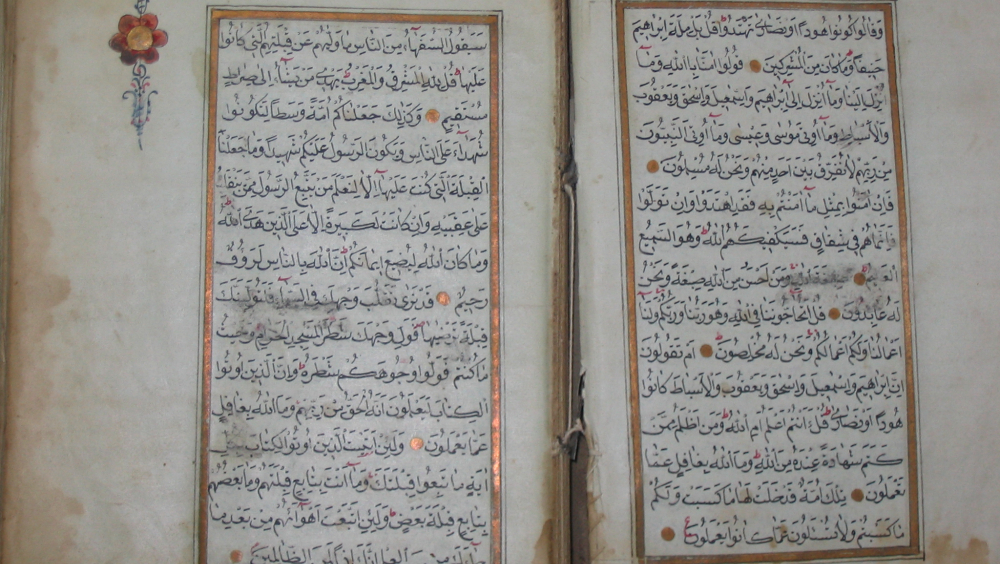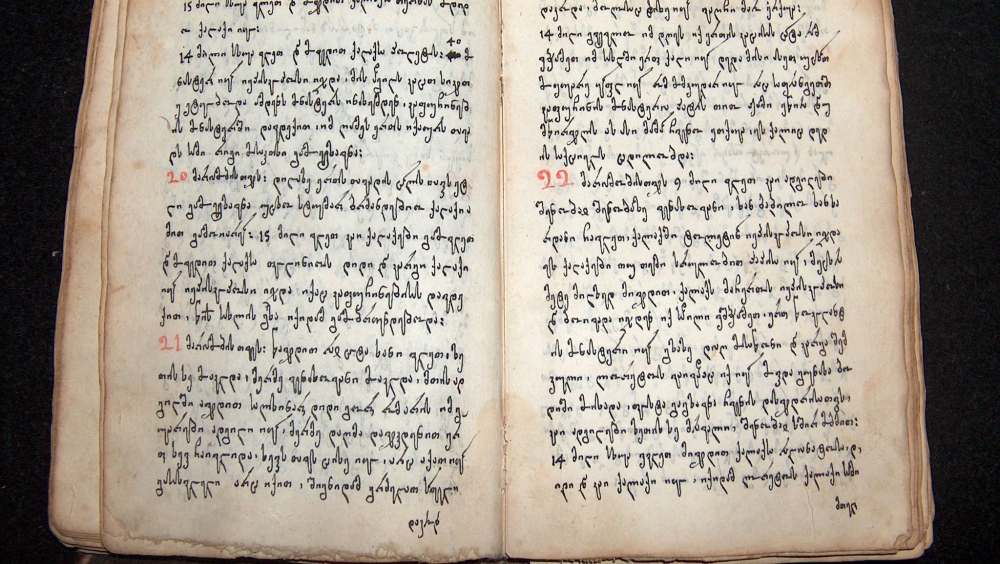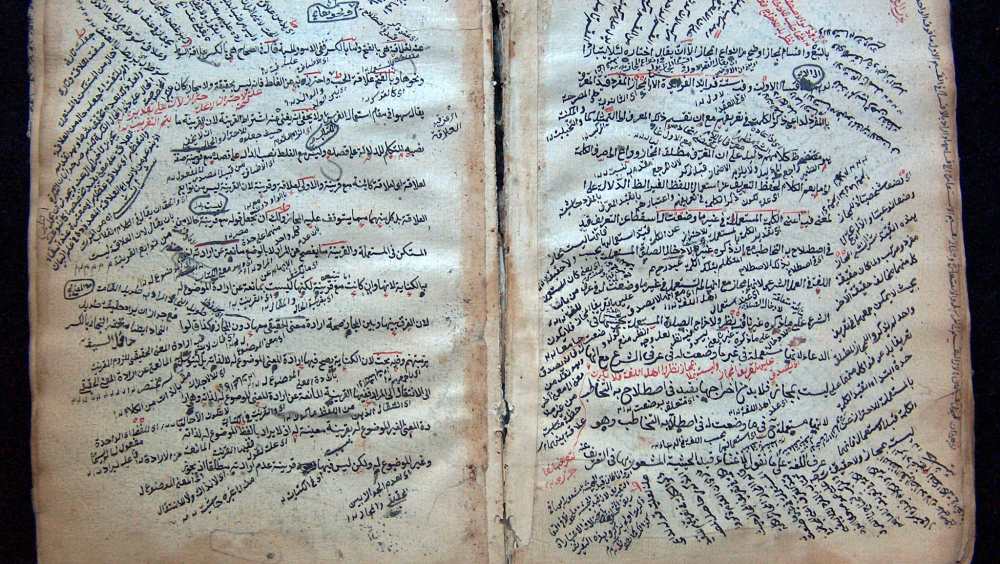"Foliants of Kutaisi Museum"
Kutaisi State Historical Museum is one of the most distinguished and important scientific-research and cultural-educational institutions of Georgia. Its founds contain many materials reflecting the Georgian-European relations in the form of archeology, numismatics, ethnography, engraved and pictorial icons, collections of old printed and manuscript books, the chronological framework of which covers the period from the first millennium BC to the XIX century AD.
A significant part of the materials is displayed in the museum's stationary exhibition and gives the museum visitors a certain idea of the relationship between Georgian and world civilization. But although the museum preserves a rich collection of old manuscripts, none of the manuscript books (originals) are presented in the exhibition except for the well-executed mules. Thus, visitors of the museum will not be able to follow the history of development of the Georgian alphabet (the Georgian alphabet has the status of a living monument in the UNESCO documentary register), as well as see with their own eyes Represents translations of European literature. In this regard, it is noteworthy the special abundance of translations of Byzantine literature.
Most of the old manuscripts preserved in the Kutaisi Museum are written on leather and taking them to the exhibition space without considering the humidity, temperature and light regime would endanger the manuscripts themselves as well as the miniatures presented in them.
It would be good to create the necessary conditions for the exhibition of a significant part of the old manuscripts preserved in the Kutaisi Museum - translated and original works (X - XIX centuries), independent of the stationary exhibition in the museum, in the exhibition space of a certain area.
The materials related to the classical era are of special interest from the old manuscripts preserved in the Kutaisi Museum. It is known that during this period the Georgians turned their faces from east to west, to Byzantium. The desire to get closer to Byzantine culture and literature was driven by the strengthening of national self-consciousness. The Georgians wanted to equate the Greeks, culturally and literary, although the manuscripts preserved in the Kutaisi Museum show traces of the influence of Byzantine culture, but this process was not one-sided. Georgian culture and literature gave a lot of important to Byzantium. Examples of this are the Gelati manuscripts preserved in the museum, N 1, 2, 3, 4, 5 metaphors, the originals of which are lost in Greek, and these works preserved in the Kutaisi Museum, which were translated in Gelati in the twelfth century by the representatives of Petritsi school, acquire the meaning of the original. Through these books it became known to the Byzantine world about one of the most prominent representatives of the 11th century Greek theological writings, John Xiphilinos. This five-volume metaphor by John Xifilinos will be an important part of the exhibition.
The interest of Georgian and foreign visitors in books of old and new perceptions is well known. The abundance of these types of manuscripts preserved in the Museum's Manuscript Fund allows the most valuable of them to be selected for exhibition. In particular: the four editions of the great Georgian scientist and writer Giorgi Mtatsmindeli, which were created by combining Georgian-Greek texts, these are: the rewritten Gospel on the Black Mountain in the Calipo Monastery, copied in 1060, the twelfth-century quarters of the Martyr Monastery and the Khonchior Church, which are distinguished by classical calligraphy and Georgian-Byzantine flawless miniature painting; The distinctive exhibit of the exhibition will be "Dogmaticon" and "Law of Faith" translated from Greek into Georgian by Arsen Ikaltoeli and copied in Gelati in the 13th century;
For the visitors of the museum, it would be interesting to see the book "Journey in Europe" by Sulkhan-Saba Orbeliani, a scientist and diplomat whose mission was to strengthen Georgia's European foreign policy. The book describes the writer's travell to Western Europe in 1713-1716.. In Sulkhan-Saba Orbeliani's "Journey", against the background of various sights, the author talks about the geographical location of European countries, the climate, the activities of the population, the household aspects, the form of political system, the rules of government, etc. Sulkhan-Saba Orbeliani's "Journey to Europe" is the first example of Georgian fiction-documentary prose. Sulkhan-Saba established a previously unknown literary genre in Georgian literature with his book "Journey"; It would be desirable to present in the exhibition, the successor of this genre, of the XVIII century - Timote Gabashvili - "Journey". Timothy travels to settlements: Mytilene, Izmir, Chios, Constantinople, Cyprus, Mount Athos, etc. Description. He was interested in the history of the origin of the geographical name, as well as the question of why Georgians and Spaniards were called "Iberians" and what the Georgian name "Georgia" means.
The exhibition will made interesting by the Gigant books preserved in the Kutaisi Museum, in particular, the exegetical works translated from Greek by Giorgi Mtatsmindeli: the translations (explanatory) of the Gospel of Matthew and John, which were rewritten in 1048 and 1053, respectively;
In order to thematically improve the exhibition, it would be good if a certain place is devoted to works of law, medicine and other genres, which describe the experiences not only Georgian but of other societies, in particular, peoples of European countries.
By organizing this type of exhibition at the Kutaisi Museum, we will provide visitors with information on the materials presented in the exhibition and in general will provide information on the issues on what Georgian culture and writing received from centuries-old relations with Europe and, on the other hand, the contribution of Georgian culture to European civilization.
Our end results will be arranging a small stationary exhibition - "Foliants of Kutaisi Museum", which will take into account the conditions of humidity, temperature and light regime in accordance with the instructions.
In cabinets specially made for the exhibition will present old manuscripts translated and original works, mainly religious literature: New Testament, Dogmaticon, Metaphor and others. As well as religious or household manuscripts copied in Greek, Turkish and Armenian languages, with bilingual Georgian-English annotations.
The exhibition will be provided with video and audio equipment, through which we will provide visitors with information in the form of small videos on the materials presented in the exhibition and in general will provide information on the issues on what Georgian culture and writing received from centuries-old relations with Europe and, on the other hand, the contribution of Georgian culture to European civilization. For organization of the exhibition we will need: Humidity and temperature regulating device; Exhibition cabinets - 8 units; Manuscript book stands - 20 pieces; Video and audio equipment; Preparation and printing the brochure - "Foliants of Kutaisi Museum", bilingual (Georgian-English).
It is known that Georgians have always aspired to Europe and the main bridge in this aspiration was Christianity. Georgians are the preachers of the Orthodox religion. Religion also holds a specific place in Europe, it is diverse and can accommodate many religions, which clearly shows one of its priorities - tolerance. This feature is not foreign to Georgians either. Proof of this is the fact that in Georgian repositories, including the Kutaisi Museum Manuscript Fund, in addition to translations, manuscripts are many copied in Greek, Turkish, Armenian, Iranian and Arabic are preserved. It would be desirable to present the literature of foreign countries as one of the priorities for the exhibition materials.
